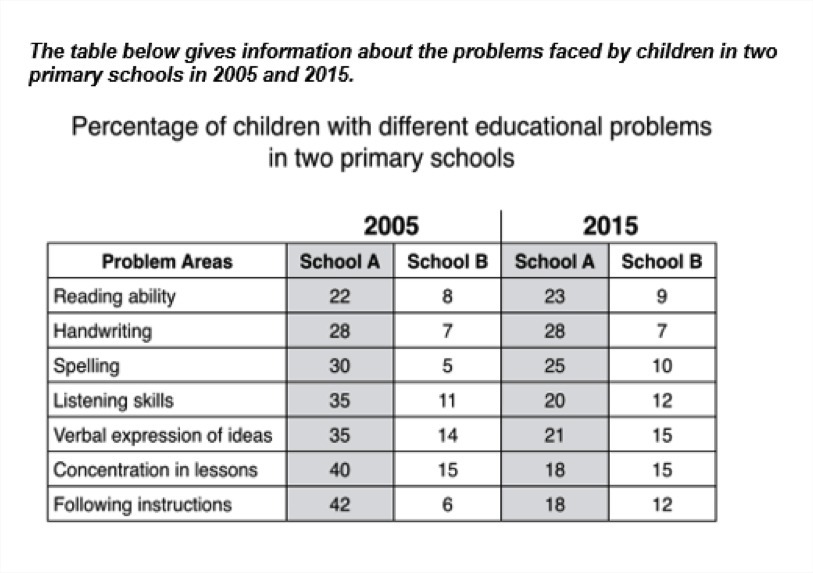
MODEL ANSWER:
Information about various academic problems faced by elementary level students in School A and B in 2005 and 2015 is depicted in the given table.
Overall, it is clear that, between these years, School-A could solve most of its students’ problems, whereas School-B could not.
As shown in the table, the two serious problems in School-A in 2005 were poor concentration in lessons and difficulty in following instructions. Around two-fifth of the total students had these issues. On the other side, the rates of students who faced these difficulties were 15 and 6 respectively.
Around 35% students in School-A had poor listening skills and weak expression of ideas. However, these proportions were 11 and 14 in School-B. Spelling, handwriting and reading were the other areas in which School-A students faced issues. When around 22 to 30% of students faced these problems in School-A, the rate of those who affected with these problems in School-B ranged between 5 and 8.
By 2015, School-A had made visible progress, except in the case of reading ability and handwriting. It could keep the rate of students who faced problems under 30. In School-B, the rate of those who had problems in spelling and following instructions doubled, while problems remained almost at the same rates among students.